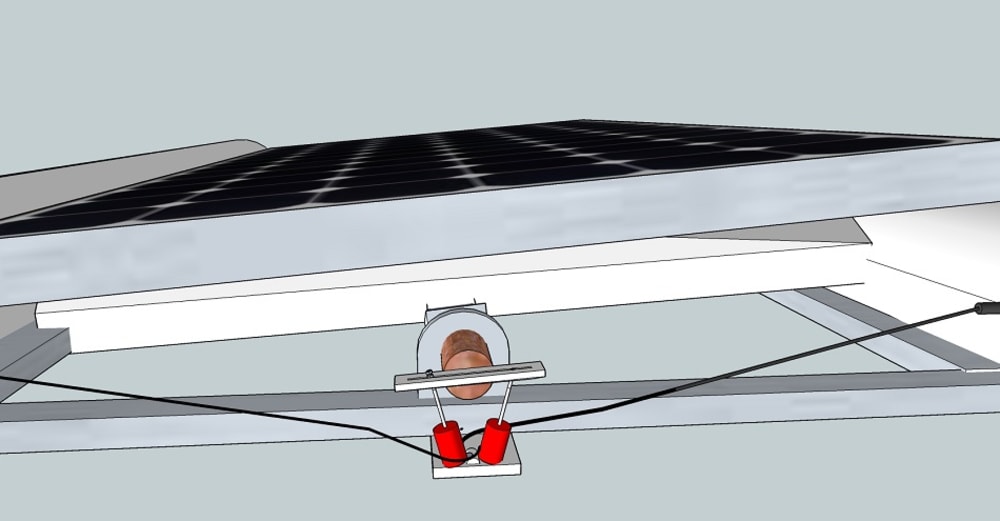The efficiency of solar cells depends, among other things, on the angle between the sun and the solar cell. The efficiency of such solar panel can be thus increased by tracking the sun path and minimizing the angle of incidence. Nowadays, similar systems are actively controlled by coupling sensors, computer and a motor which tilts the cells towards the sun which, in turn, consumes the part of gained energy for tilting the panels.
Solution proposed here presents a passive system which is based on the sun direction and uses no additional power source to follow the sun path. The system functions on the emissivity coefficient difference between completely black and mirror type of material. Two cylinder-shaped liquid storage containers are placed on the left and the right side of the solar panel. Left side container is covered with black layer on the left side and material with low emissivity on the right. The opposite black/mirror pattern is applied for the right container. This causes a temperature difference between the left and the right container when the sun radiates heat from a certain direction. Fluid inside the containers expands depending on the temperature increase (Fig 1). Because the temperature and consequent thermal expansion depend on the direction of the sunlight, fluid inside containers would expand differently on each side. Fluid in containers is connected with two cylinders (marked with red colour in Fig 2). Since the left container is connected to the right cylinder and vice versa, fluid expansion causes solar panels to turn against the sun. Solar panel angle can be adjusted by the distance of cylinders from the turning axis (closer are cylinders together, higher the sensitivity – Fig. 2). To accommodate for the increase/decrease of ambient temperature the pivoting junction (attachment to the frame next to the cylinders) is made flexible.
The system could be expanded by lower and upper containers and consequent application of dual axis tracker system to accommodate for the seasonal path variations.
It is possible to apply the same system to solar collectors angle control as well. The use with solar collectors is two-fold; it could be used to increase efficiency when needed, or – by switching left and right connector tubes which would cause turning collectors away from the sun – lowering efficiency in order to avoid overheating when hot water is not needed.
In comparison to active systems, the proposed system is more robust due to very few moving components.
Like this entry?
-
About the Entrant
- Name:Janez Perko
- Type of entry:individual
- Software used for this entry:SketchUp, Comsol
- Patent status:none





